Each spring, one of the narrowest-looking tee shots in golf takes center stage at the Masters. At 465 yards, the par-four finishing hole, “Holly,” historically has played as the 7th most difficult on the course. Wind can be a factor here, which is why past champions with Green Jackets take dead aim at the fairway bunkers positioned near the outside corner of the uphill hole’s subtle dogleg. “Basically, I’m using a club that puts me just short of the closest fairway bunker on the left side,” Tiger Woods once explained.
In a Masters-produced interview previewing the championship, Scottie Scheffler said it best: “It’s a hard tee shot,” he acknowledged. “Sunday with a lead, really I’m just trying to make sure I don’t hit any of the trees on the side.”
Augusta National’s 18th hole may be well known for the tight alley that players must hit their tee shots through, but it’s not the only hole famous for its lack of width. Here, we spotlight 10 other holes that are memorably narrow.
Sahalee Country Club (South), 1st Hole—Sammamish, Wash.
When Wesley and George Bryan filmed one of their Bryan Brothers YouTube vlogs at Sahalee, George quickly opined that the opening playing corridor on the South nine appears to only offer 10 yards of fairway. “It’s a hallway as you can see,” he said. “Its nickname is the hallway.”

In truth, Sahalee’s fairways average about 26 yards in width, which is about as narrow as the USGA makes some of the fairways of the country’s most iconic private clubs as they’re prepped, primed, and tweaked to host U.S. Opens. “If you have a 27-yard-wide fairway, guys aren’t trying to get to the left side or the right side,” Gil Hanse once said of such tight landing zones. “They’re just trying to get into the fairway.”
With towering pines on either side of this fairway, golfers could get a friendly carom back into the narrow runway of short grass. But it’s just as likely they end up stymied behind one of those massive trunks.
Biarritz Golf Club, 1st Hole—Biarritz, France
Given its modest length as a par five, the first hole at Biarritz Golf Club, the oldest course on the Basque Coast, is tantalizing. But a glimpse down the playing corridor subdues some of that initial optimism. Massive trees, especially in their width, stand like rows of attentive soldiers on either side of the fairway. While not as terrifying as other narrow, tree-lined holes—it’s clear that low punch shots from out of the trees can possibly keep birdie chances in play—the recognition that a well-struck and well-positioned drive could give way to eagle opportunities puts a lot of pressure on the tee shot. That makes this hole feel even tighter.
Valderrama Golf Club, 1st Hole—Sotogrande, Spain
On Valderrama’s first hole, the tee boxes form a perfect line, their markers looking like the painted stripes of an airport runway, albeit a very narrow one. The fairway, itself, doesn’t suggest narrowness, but its twisting nature and the fact that it’s pinched at key areas by olive and cork trees certainly does. What Robert Trent Jones Sr. did here is akin to what Pete Dye achieved on several of his courses—Harbour Town being the most reflective. Jones created a layout of routings that require players to hit the A-position with their drives or suffer the consequences. On this opening hole, only the left side of the fairway offers a clear approach into the miniscule green. It goes without saying that precision is key, but that’s easier said than done, especially on the first shot of the round.
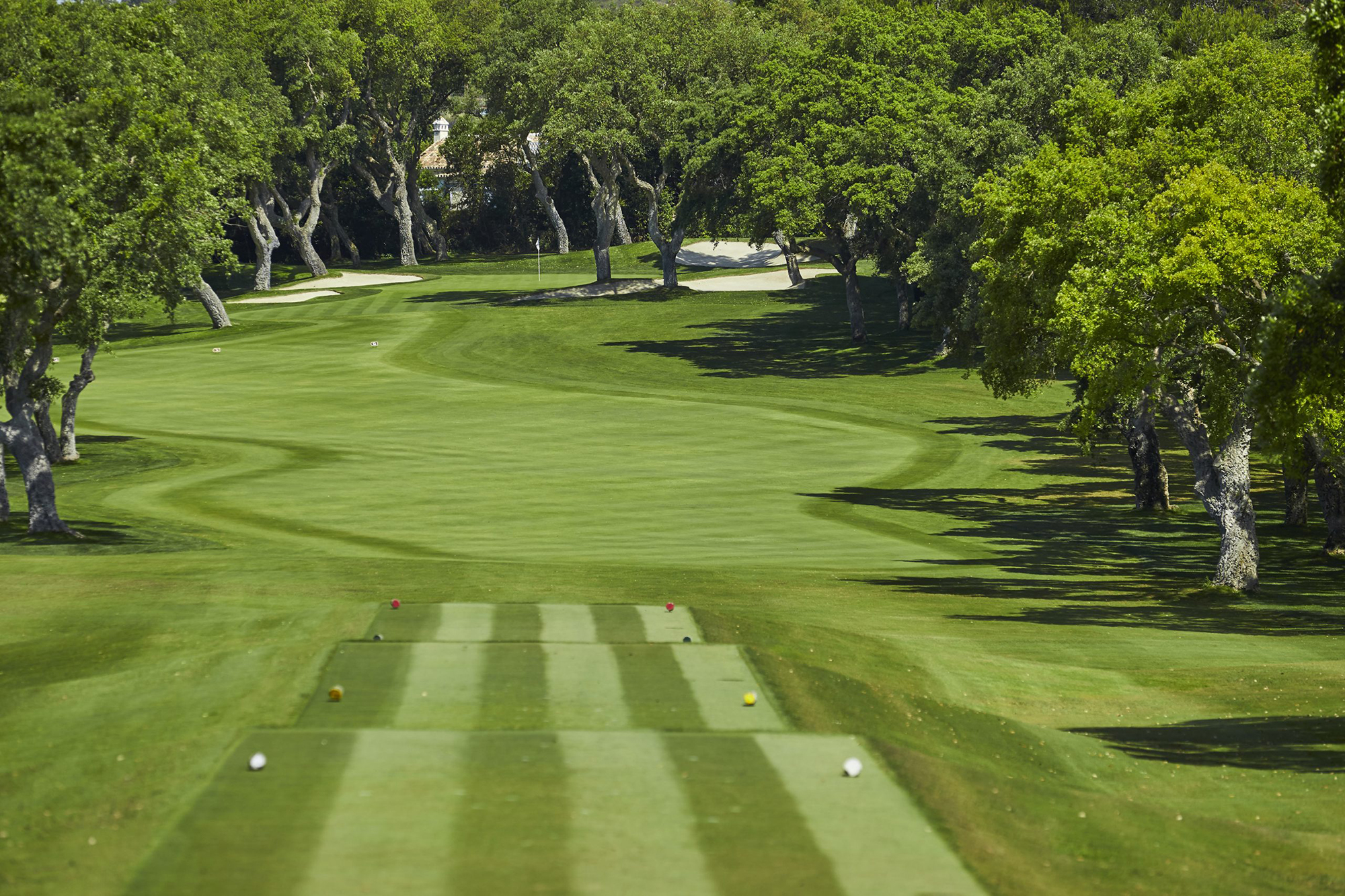
Cultus Lake Golf Club, 4th Hole—Cultus Lake, British Columbia, Canada
After a trio of par threes to open a round at Cultus Lake, an 18-hole executive course in British Columbia, golfers will arrive at the 4th, a mid-length, straightaway par four playing as much as 370 yards, and they’ll be yearning to pull out their drivers. Only the straightest of shooters should attempt this. Instead, heed the advice found in the yardage guide: “Stay in the fairway. It’s the only way to approach the green, with a large tree blocking the right and traps to the left.” Ironically, this narrow hole features a wide green, though that may not be saying much, as the putting surface is only as wide as the fairway, which tips out at about 20 yards.
Northwood Golf Club, 5th Hole—Monte Rio, Calif.
Set along a bend of the Russian River and surrounded by 10,000 California redwoods, Northwood is a course aptly described by Erik Anders Lang (founder of Random Golf Club) as “the most famous course you’ve never heard of.” Designed by Alister MacKenzie around the same time that he was carving out Augusta National and Cypress Point, this hidden gem in the Pacific Northwest utilizes those redwood trees as its primary defense. The narrowest hole across these 5,786 yards is the 469-yard 5th, a par five that promises circles on the card, so long as players can hit tee shots that fly arrow-straight. If they don’t, the eventual number on the scorecard may elicit more disappoint than delight. “I think we may have mistakenly kept score,” Lang facetiously declared at the beginning of the vlog chronicling his round there back in 2021.
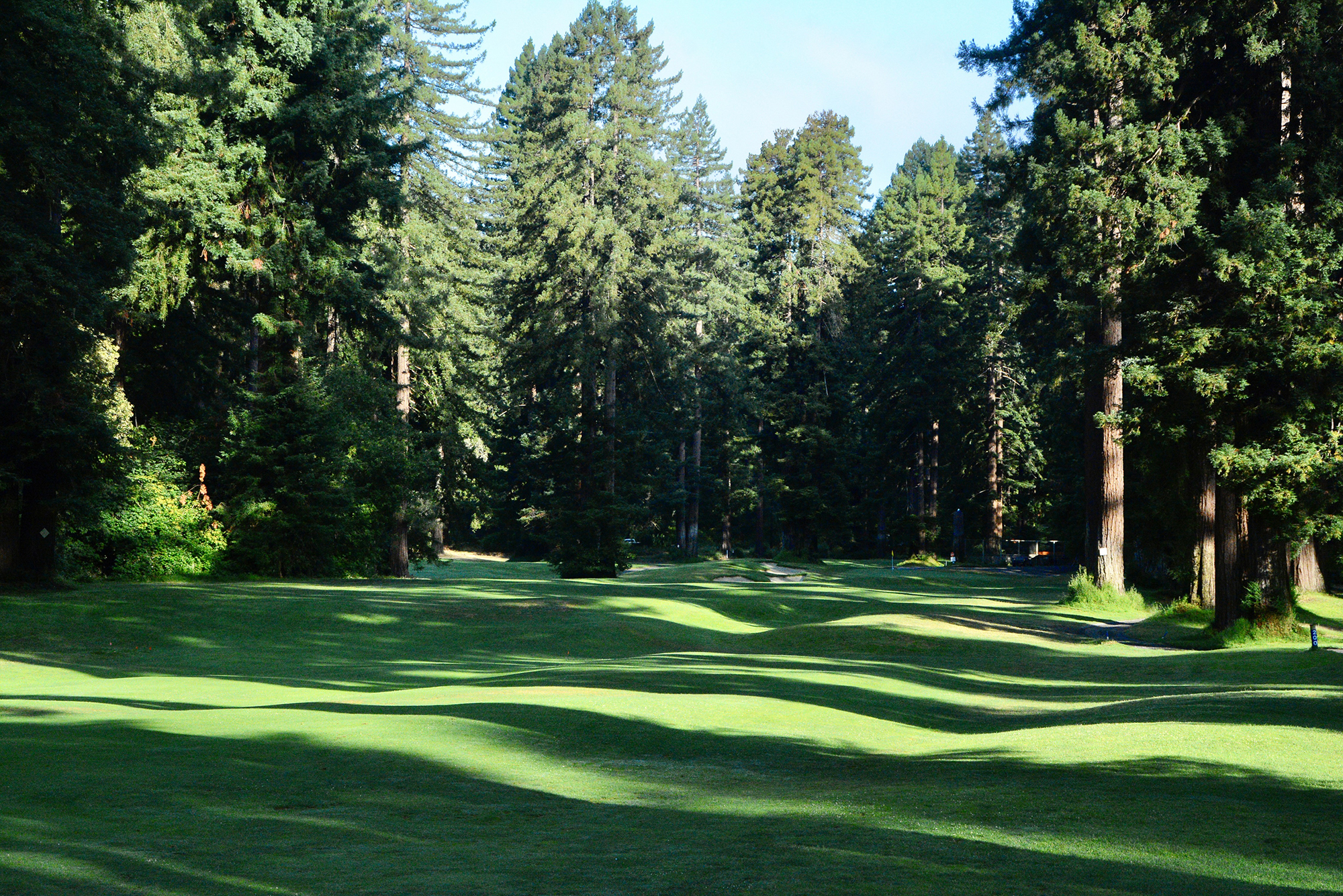
Al Hamra Golf Club, 8th Hole—Ras Al Khaimah, United Arab Emirates
“Very, very narrow.” “Extremely narrow.” “Tiny.” Those were some of the phrases and words that Padraig Harrington used to describe the fairways ahead of the Ras Al Khaimah Championship when the DP World Tour visited Al Hamra in 2023. After two rounds of competitive play, only two players in the field had hit 50 percent of the course’s fairways. Not more than 50 percent. Exactly 50 percent.
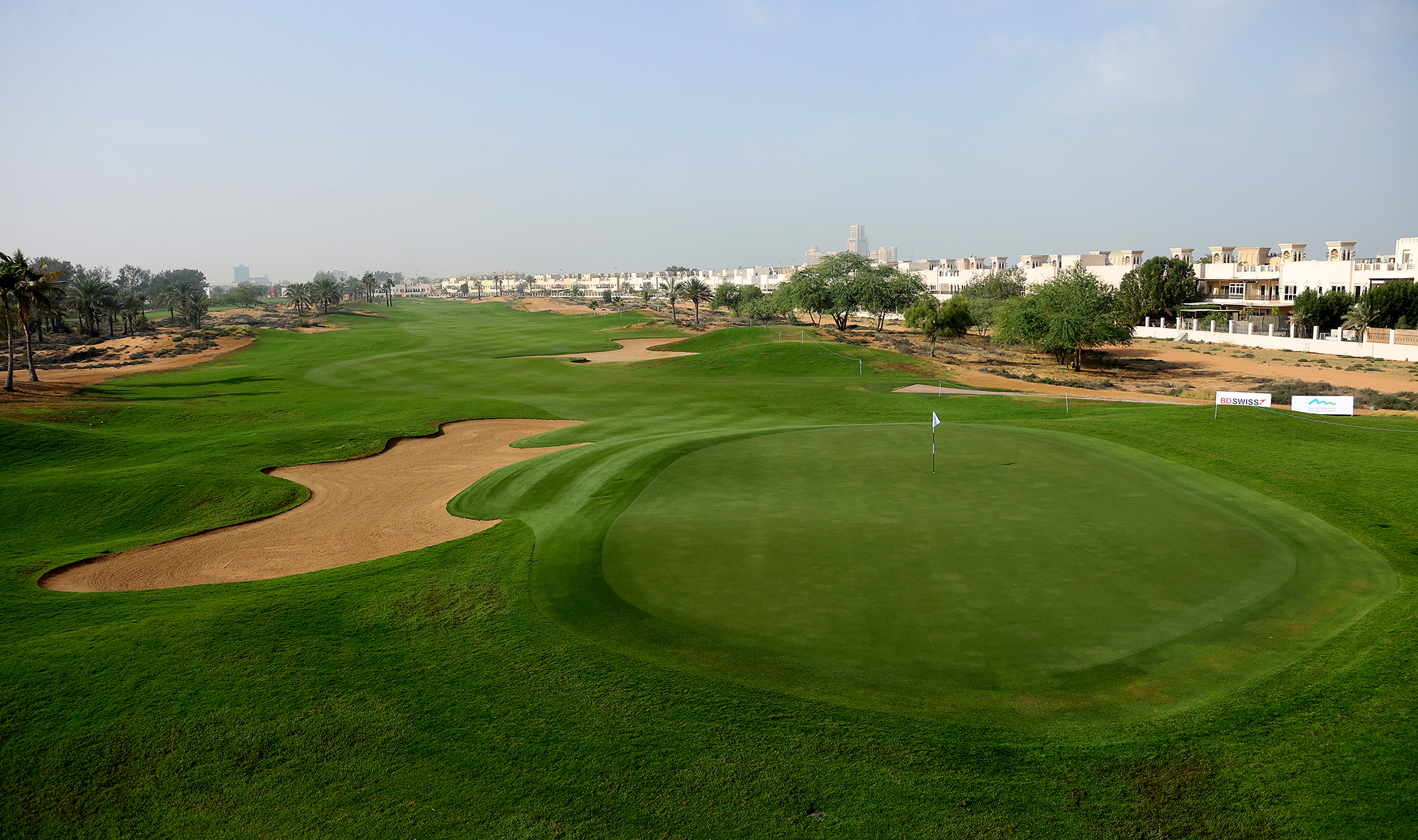
Any of Al Hamra’s holes would fit this story’s criteria, but the 8th hole, a 600-yard par five, is perhaps the most extreme. At its fattest point, the fairway is only 26 yards wide, but over the vast majority of those 600 yards in length, the hole presents players with a sliver of short grass that measures only 20 yards from edge to edge. On either side? Thick rough and soft sandy dunes beyond.
If you’re thinking that the very idea of keeping the ball in the fairway here is a futile exercise, you’re not alone. “Eventually,” Harrington said in 2023, “you give up trying to hit them and just lash away.”
The Olympic Club (Lake), 6th Hole—San Francisco, Calif.
The 6th hole on the Lake course at The Olympic Club used to be the only one to feature a fairway bunker, but following a recent restoration by Gil Hanse and Jim Wagner, now half of the holes on the course do. That restoration also impacted the width of several of the holes. The 9th, which was notoriously narrow (previously a great candidate for this story), is now more welcoming off the tee. The 6th, however, remains narrow thanks to a cantered fairway that slopes from right to left toward a bunker. A tree line that encroaches down the right side really comes into play about 100 yards out from the green, where overhanging branches can produce challenging approach shots. According to Matthew Jordan, the club’s director of golf, players are all but forced to hit a left-to-right shot off the tee. “I’m in that damn bunker most of the time,” he says, which speaks to just how narrow this hole plays.
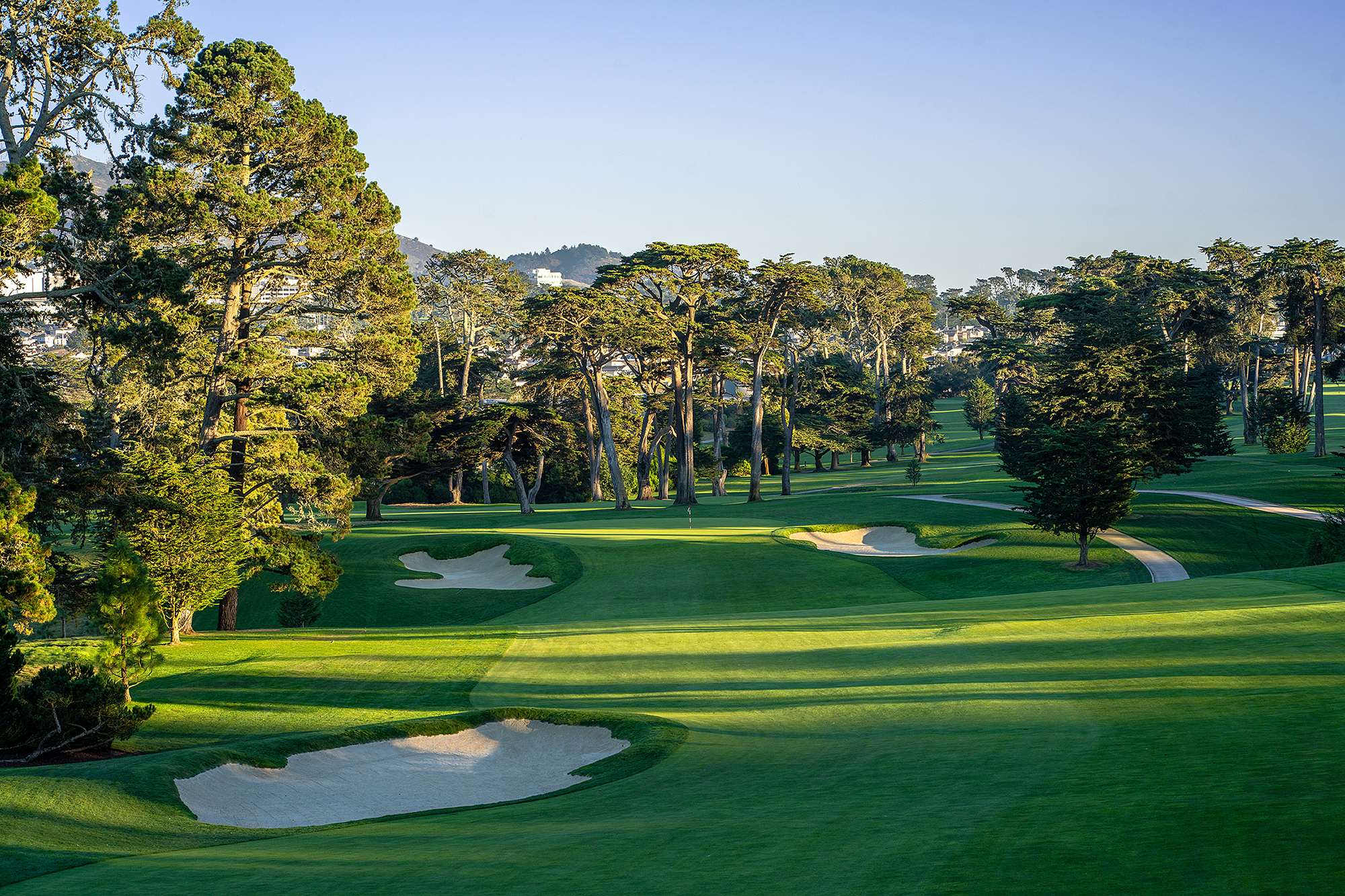
Blackwolf Run (Meadow Valleys), 10th Hole—Sheboygan, Wis.
Arrival at the tee box for the 10th hole of the Meadow Valleys course—aka “Quiver”—will almost assuredly elicit conflicting emotions. Part of you—the half that’s likely been frustrated and flummoxed by the gusty winds that often blow off Lake Michigan—will take solace in the fact that the opening hole of the back nine isn’t as exposed to those winds. The other half of you, however, will feel a claustrophobic twinge as you look down a narrow chute of a fairway lined by dense woodlands on both sides. Fortunately, the tee shot doesn’t require anything more than 220 yards from the back tees. The challenge, of course, is staying relaxed during that swing, all the while knowing that precision is paramount to success.

Harbour Town Golf Links, 13th Hole—Hilton Head Island, S.C.
Leave it to Pete Dye to design a narrow golf hole that doesn’t actually look narrow. That’s one of the most appreciated—and challenging—aspects of Harbour Town’s 13th hole, a 373-yard par four that doglegs to the left and plays to one of the course’s most imposing green complexes. To even have a clear shot at that bicycle seat-shaped putting surface (where a horseshoe of sand guards the front and sides), golfers need to place their drives in an area no more than 20 yards wide and only about 30 yards deep along the right side of the fairway. Miss that target, and you’ll likely be at least partially blocked by overhanging limbs.

Oak Point at Kiawah Island Golf Resort, 14th Hole—Kiawah Island, S.C.
Tipping out at only 345 yards, the 14th hole at Kiawah Island Golf Resort’s Oak Point course doesn’t look very foreboding on the scorecard or in the yardage guide. Stand on the tee box, however, and the short par four comes to life in a brand new way. Although the trunks for many of the live oaks and other deciduous trees lining the fairway take root several yards away from the short grass, the canopies of those trees encroach on the fairway in such a way that players will feel as though they have to thread the needle with their drives. Even if you should find short grass off the tee, the challenge isn’t over. Yes, you’ll have only a short iron or a wedge into the green, but those trees do a great job of concealing the strength and direction of the wind, which means the lagoon that fronts the putting surface is very much in play.
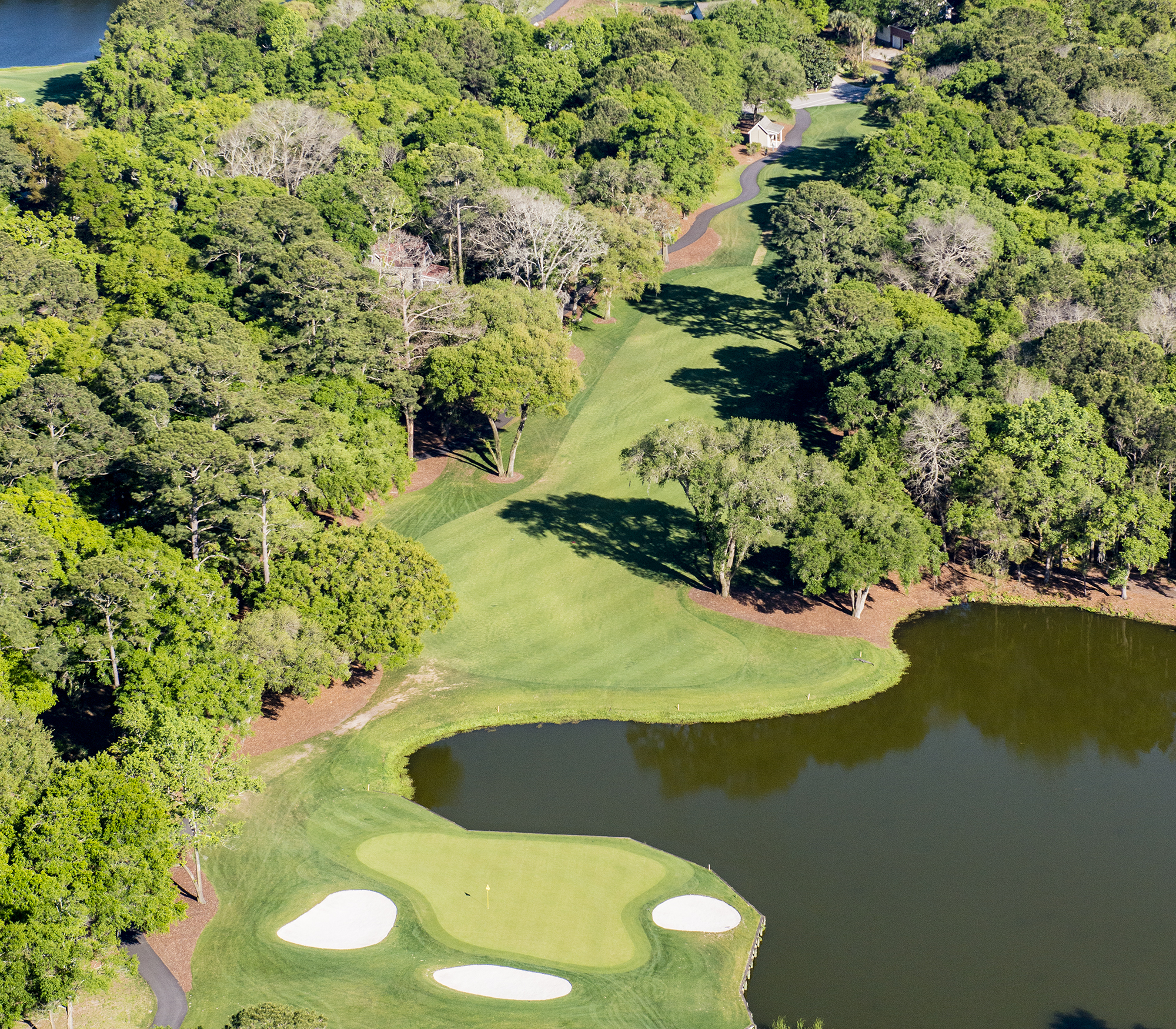


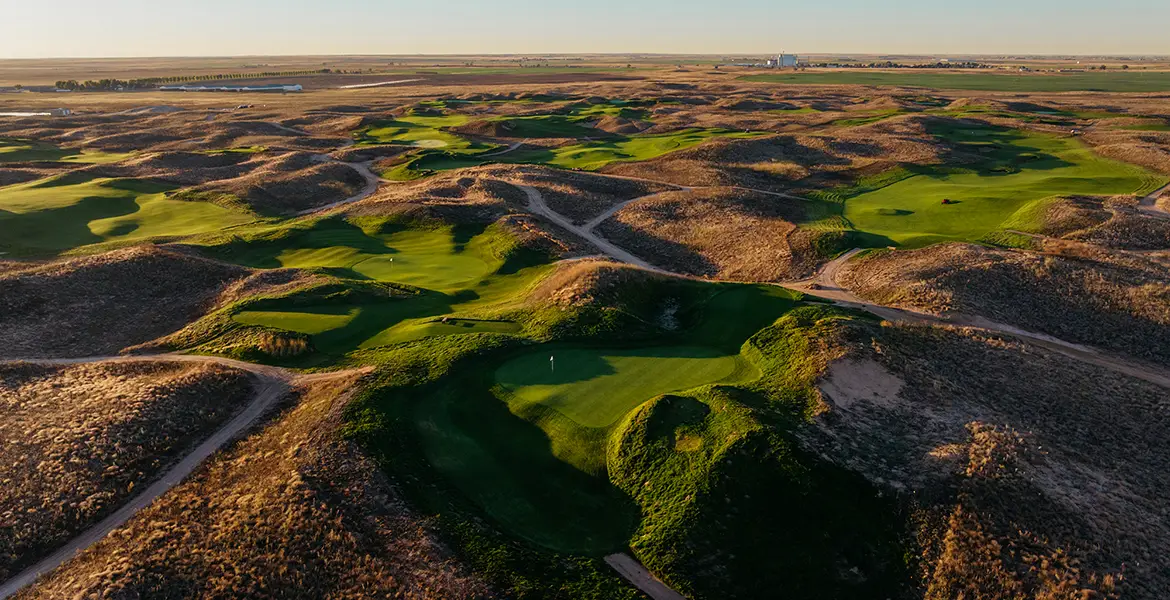
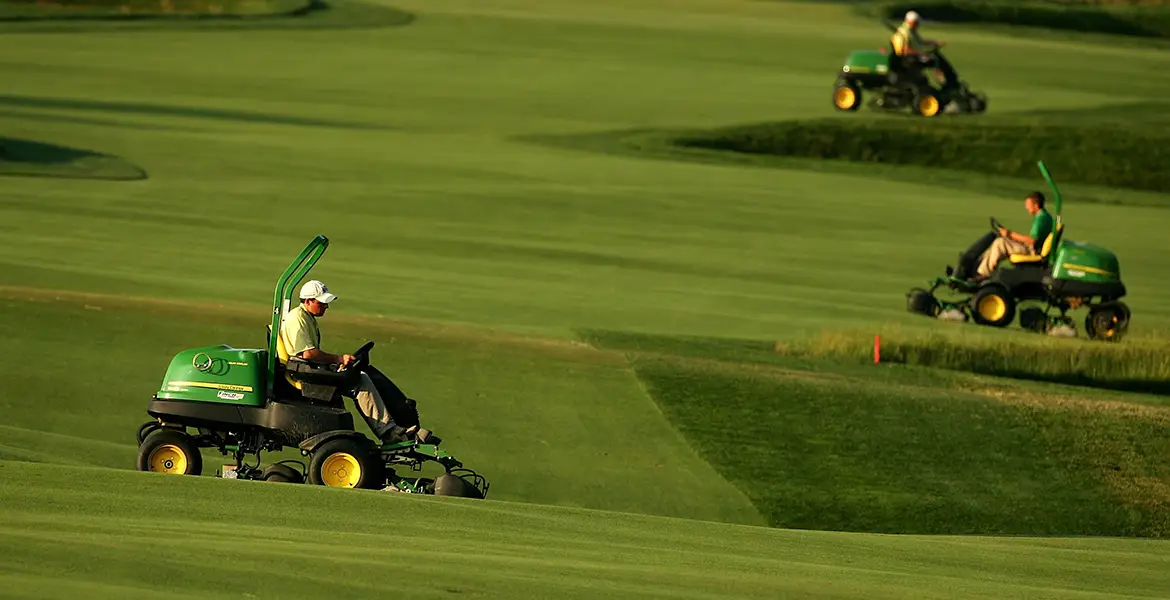
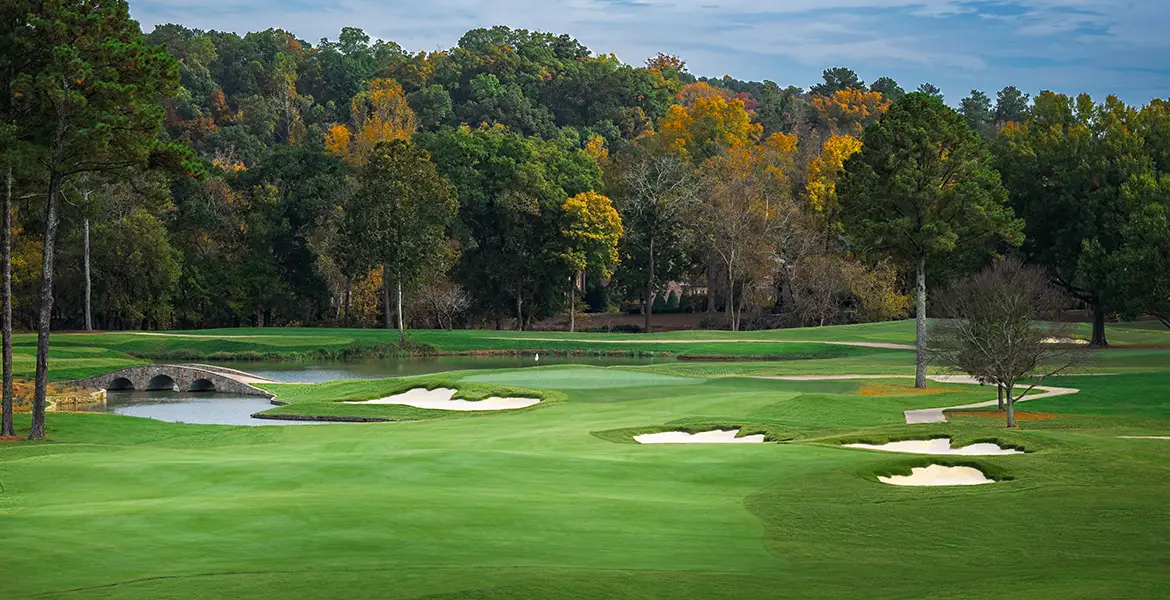
I would say Harbour Town #1 is equally intimidating since it feels like driving down a two-lane road (if not a bowling alley). It’s the claustrophobic introduction to the course.
Harbour Town #1 was first on my list as well. It’s wide enough to walk down as long as you turn sideways.
What about the “narrows” #15 at Prestwick?
The narrowest fairway in the UK and the continent.
Jeff, I would venture to say that the 14th fairway at The Island Golf Club just outside Dublin would be the narrowest fairway in Europe!!
Yes! 15 yards wide.
100%!! 14th at The Island club is like hitting down a hallway.
Does #15 at Prestwick have the narrowest fairway in Europe? I also think it’s #14 at The Island GC in North Dublin, Ireland. I’ll check in June and compare with memories from Prestwick a year and a half ago.
Point of clarification… Sahalee’s trees are primarily Douglas Fir trees, not pines.
Interesting how many 1st holes made the list.
I rather expected Prestwick #1 would be on the list; although perhaps it just feels narrow, with the OB railway line hugging the right side of the fairway.
I’m glad you mentioned Northwood Golf Course in Monte Rio, CA. I would say #9 is more narrow than #5 though. Beautiful setting either way!